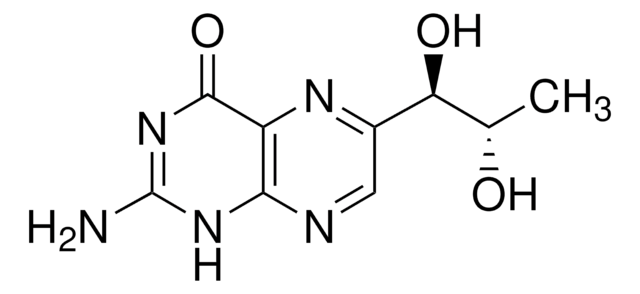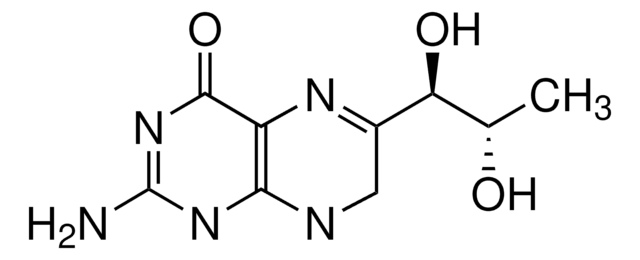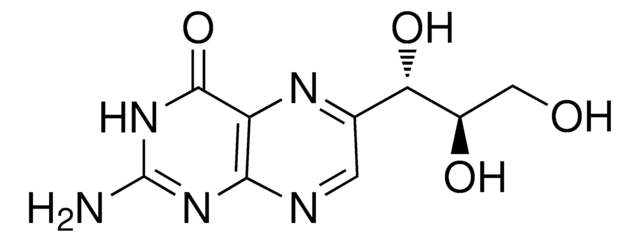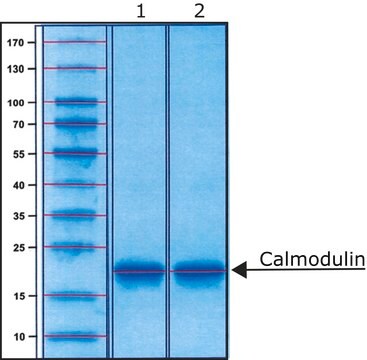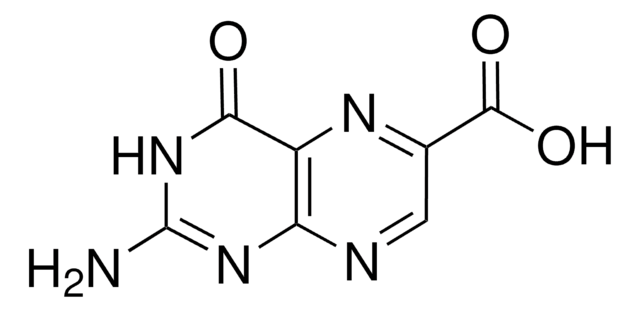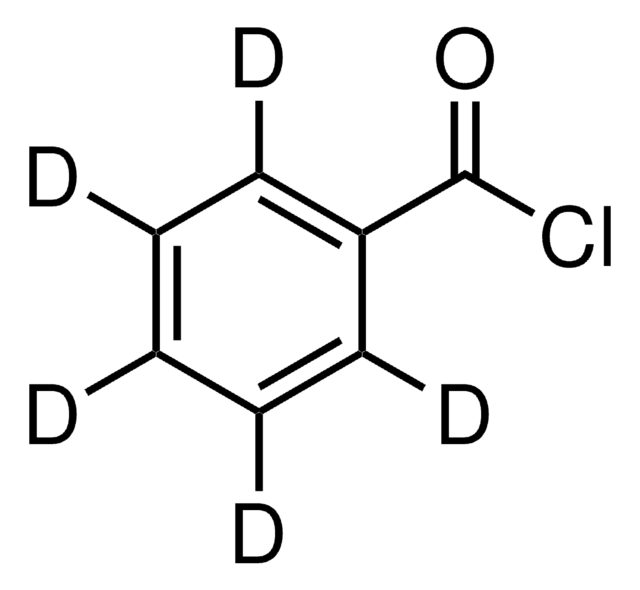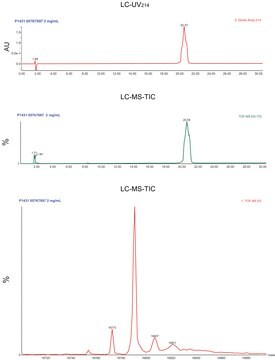T4425
(6R)-5,6,7,8-Tetrahydrobiopterin dihydrochloride
≥98% (HPLC), powder
Synonyme(s) :
(6R)-BH4
About This Item
Produits recommandés
product name
(6R)-5,6,7,8-Tetrahydrobiopterin dihydrochloride,
Niveau de qualité
Solubilité
water, oxygen free: soluble 19.60-20.40 mg/mL, clear to slightly hazy, colorless to faintly yellow
Température de stockage
−20°C
Chaîne SMILES
Cl.Cl.C[C@H](O)[C@H](O)[C@H]1CNC2=C(N1)C(=O)NC(N)=N2
InChI
1S/C9H15N5O3.2ClH/c1-3(15)6(16)4-2-11-7-5(12-4)8(17)14-9(10)13-7;;/h3-4,6,12,15-16H,2H2,1H3,(H4,10,11,13,14,17);2*1H/t3-,4+,6-;;/m0../s1
Clé InChI
RKSUYBCOVNCALL-NTVURLEBSA-N
Informations sur le gène
human ... PAH(5053)
Description générale
Application
Actions biochimiques/physiologiques
Caractéristiques et avantages
Notes préparatoires
Certificats d'analyse (COA)
Recherchez un Certificats d'analyse (COA) en saisissant le numéro de lot du produit. Les numéros de lot figurent sur l'étiquette du produit après les mots "Lot" ou "Batch".
Déjà en possession de ce produit ?
Retrouvez la documentation relative aux produits que vous avez récemment achetés dans la Bibliothèque de documents.
Les clients ont également consulté
Notre équipe de scientifiques dispose d'une expérience dans tous les secteurs de la recherche, notamment en sciences de la vie, science des matériaux, synthèse chimique, chromatographie, analyse et dans de nombreux autres domaines..
Contacter notre Service technique

